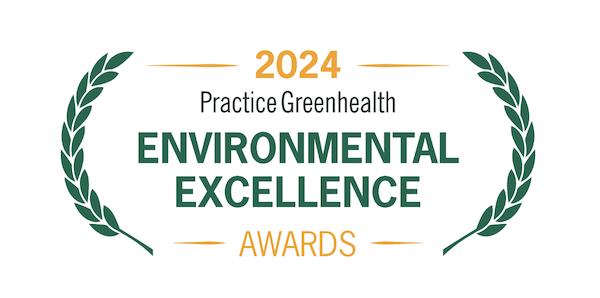Ask an expert: Recognizing stroke symptoms
[5 MIN READ]
In this article:
-
Time is brain. Prompt evaluation and treatment for a stroke is the difference between recovery and disability.
-
The BE FAST acronym can help you remember stroke symptoms and what to watch for.
-
Never wait to see if stroke symptoms go away. Always call 911 if you or a loved one has signs of a stroke.
Recognizing stroke symptoms quickly
In the United States, nearly 800,000 people have a stroke each year. When it comes to a stroke, fast care is vital to protecting your brain. The first step is recognizing the signs of a stroke so you can get to the hospital quickly and safely.
What is a stroke? Understanding its seriousness
A stroke is a sudden lack of oxygen to the brain caused by a compromise in the supply of blood to the brain, such as a blockage or rupture in the arteries.
“During a stroke, an estimated 2 million brain cells die during each minute your blood flow is blocked,” says Amit Kansara, M.D., vascular neurologist and medical director of the Comprehensive Stroke Center at Providence St. Vincent Hospital in Portland, Oregon. “Without prompt medical treatment, a stroke can lead to lifelong disabilities. If detected early, strokes are considered a treatable condition.”
Types of stroke: ischemic and hemorrhagic
There are two types of stroke. The most common is called ischemic stroke, and it happens when blood clots or plaque (fatty deposits that develop from high cholesterol) block the flow of blood to the brain. Roughly 80% of all strokes are ischemic. A transient ischemic attack (TIA) is a type of mild ischemic stroke. A TIA occurs when the blood supply to the brain is interrupted or cut off for a short time, resulting in a brief and sudden decrease in brain function.
A hemorrhagic or bleeding stroke is the result of a burst artery or blood vessel in the brain.
“If you have a mild stroke or TIA, do not assume that you have dodged the bullet,” says Ted Lowenkopf, M.D., vascular neurologist at Providence Neurological Specialties - West. “A TIA could be a warning that you are at risk for a full-blown stroke, which could occur anywhere from minutes or hours to days later. You need to seek medical attention If you have a TIA.”
Symptoms of a stroke
Dr. Kansara says that stroke symptoms are generally similar for both ischemic and hemorrhagic strokes. However, people can experience mild symptoms that worsen with time, as well as nausea, headache and vomiting. In addition, a hemorrhagic stroke often causes a severe headache in addition to more common stroke symptoms.
It’s possible to have a stroke while sleeping, and minor stroke symptoms might not wake you up. However, if you do wake up and suspect a stroke, do not go back to sleep. Call 911 right away.
“When people wake up after a stroke they notice the symptoms, which can depend on the severity of the stroke and the region of the brain it damaged,” says Dr. Lowenkopf. “Perhaps one leg does not seem to work well, or an arm feels weak. People may have double vision, a partial loss of vision and they might feel dizzy or unsteady walking down the hall. These are symptoms you should never ignore.”
Common misconceptions about stroke symptoms
Several dangerous myths about stroke can lead to a delay in treatment. Dr. Kansara says the most common myth is that stroke symptoms only affect one side of the body. He explains that while many people experience weakness in one arm or facial drooping on one side, some strokes can cause overall weakness or a total loss of vision.
It’s also common for people to believe that once they have a stroke nothing can be done to lessen the impact. However, clot-busting medications can be given up to four and a half hours after the onset of symptoms, while other interventions can be used up to 24 hours after a stroke begins.
“There is always something that we can provide. It’s always best to call 911 and come to the ER,” says Dr. Kansara. “Stroke treatment takes a village, and care goes well beyond the time you spend in the hospital. Follow-up care should be taken very seriously to optimize recovery.”
Many people also think that stroke is a disease that only impacts the elderly. An estimated one in four strokes happens before the age of 60. That’s why stroke symptoms at any age should be taken seriously.
The BE FAST acronym: a quick guide to identifying stroke signs
Balance – sudden loss of balance and coordination
Weakness on one side of the body, falling while walking or standing
Eyes – trouble with vision in one or both eyes
Sudden loss of vision or intense blurriness
Face – facial drooping or numbness
One side of the face is lower than the other and cannot smile or change facial expression
Arms – arm weakness or numbness
Weakness in one or both arms, not being able to grab something or a suddenly weak grip
Speech – sudden speech difficulty or trouble communicating
Slurring, difficulty finding the right words or speaking gibberish
Time – importance of quick response
For any of the symptoms above, call 911. Tell them you think it’s a stroke so the local hospital can prepare its team.
Immediate steps to take during a stroke
Stroke experts agree that time is brain. A stroke is a medical emergency and if you or someone you know is having stroke symptoms it’s important to call 911 right away. You should not try to drive yourself or someone having a stroke to the emergency department. Certified stroke centers, such as the comprehensive stroke centers at Providence, coordinate with first responders to ensure that a highly trained stroke team is available and waiting for patients who arrive by ambulance. This saves precious minutes when it comes to life-saving care. It's also important to not take aspirin if you experience signs of a stroke, since the drugs can cause excessive bleeding.
“Prompt evaluation and stroke treatment can make the difference between recovery and long-term disability,” says Dr. Lowenkopf. “The first three hours after a stroke are a critical opportunity for clot-busting drugs or other interventions that can restore brain function.”
The telestroke program at Providence
Every second counts when it comes to stroke care. The telestroke program at Providence provides access for stroke patients to have a timely diagnosis and treatment, even if their local hospital isn’t equipped to handle complicated stroke cases.
Through the telestroke service, Providence neurologists can assess a stroke patient’s condition via a secure video connection. Working with providers who are with the patient, they determine the best course of treatment.
Preventing strokes: Lifestyle and health tips
You can’t always prevent a stroke, but you can take steps to lower your risk factors, no matter your age or current health. Factors that can increase your risk of stroke include high blood pressure, high cholesterol, diabetes, smoking, drinking alcohol and any use of certain street drugs, such as cocaine or methamphetamine.
A healthy diet — one that includes plenty of fruits, vegetables, nuts, beans, small amounts of fish, poultry and limited red meat and dairy products — has been shown to reduce the risk of stroke by about 20%. In addition, regular cardiovascular exercise can help strengthen your heart, as well as lower your blood pressure. It also can help you control your weight and cholesterol, which can increase your stroke risk. It’s also important to work with your medical provider to manage health conditions such as diabetes and cardiac conditions.
Contributing caregivers
Amit Kansara, M.D., is a vascular neurologist and medical director of the Comprehensive Stroke Center at Providence St. Vincent Hospital in Portland, Oregon.
Ted Lowenkopf, M.D., is a vascular neurologist at Providence Neurological Specialties – West.
Find a doctor
If you need to find a neurologist, you can find one who's right for you using our provider directory.
Download the Providence app
We’re with you, wherever you are. Make Providence’s app your personalized connection to your health. Schedule appointments, conduct virtual visits, message your doctor, view your health records and more. Learn more and download the app.
Related resources
Providence stroke and diabetes programs earn national recognition
What you need to know about the new stroke guidelines
How telehealth saved a rural stroke patient
This information is not intended as a substitute for professional medical care. Always follow your health care professional’s instructions.






